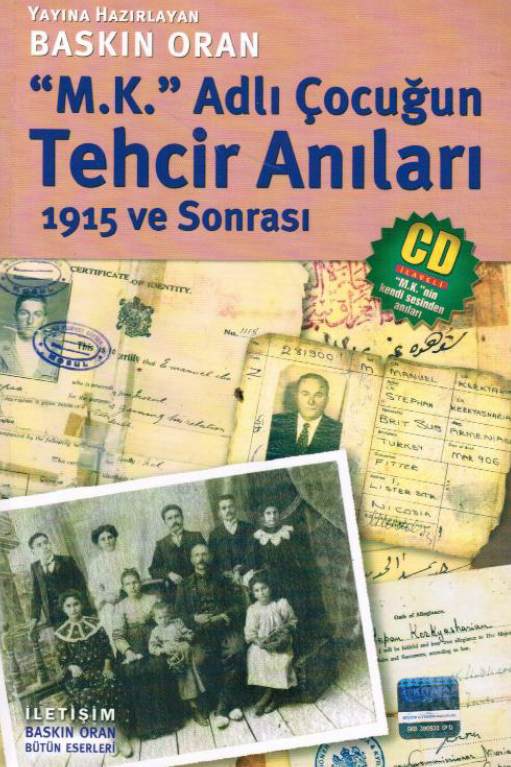Prepared for Publication by Baskin Oran, Iletisim Yayinlari, Istanbul, 2005
Recorded by Manuel Kirkyasaryan in 1980, at the age of 76 years. He was born in Adana in1906, died in Australia in 1987 at the age of 91.
This is a different kind of a book which tells the story of an Armenian with explanations on the events by a Turkish academician, Baskin Oran (1), who ran for the Parliament in 2007 as an independent and lost. Baskin Oran is well known in Turkey through his many books and articles published in several newspapers including Birgun, AGOS and other magazines.
Baskin Oran emphasizes that, despite all the hardship that M.K. faced, he gives no room to hatred in his memoirs, ready to forgive and to love.
The 160-page book begins with an introduction, presenting a chronology of events in M.K.’s life, which takes him from Adana to Cyprus, on to Aleppo (Halep) and finally to Australia where he establishes a business of growing apricots and selling dried apricots worldwide. His father was originally from Hacin (Saimbeyli) where Armenians used to live, both before and after the re-location (2). M.K. was 3 years old when the Armenian uprisings begin in Adana in 1909.
As a footnote, Baskin Oran presents a summary of the Adana uprising, giving the two versions; one, the riots were started by the Tasnak and Hincak committee members, the other, the Moslems attacked the Armenian quarter to seize their belongings. At the end, Baskin Oran claims that 17,000 Armenians and 1,850 Moslems died during the uprising. Following the trials, many Moslems and Armenians were either sentenced to prison or executed (3).
M.K.’s memoirs begin with the relocation of Armenians in 1915, including M.K. and his family. In the footnote, Baskin Oran briefly explains the reasons for the forced re-location of Armenians with very little mention of the Armenian uprisings. M.K. tells Baskin Oran that his mother commits suicide during the relocation and one day he finds his father murdered, along with many others. M.K. has four sisters, but they have already gotten married and immigrated to the US or the island of Corfu (the one married to an Armenian from Tarsus), long before the relocation. M.K. manages to flee and go to Cyprus.
In 1924, M.K. goes to Halep, where the memoirs end. M.K.’s story beyond 1924 is told to Baskin Oran by his son Stepan and daughter Misak Basyan. In a footnote, Baskin Oran states that Stepan Kirkyasaryan lives in Australia.
The ‘’Introduction’’, which begins with a comment by M.K. that he believes that the re-location was masterminded by the Germans, gives a brief summary of the First World War and how the Ottoman government got involved.
There are several references to the Armenian deputies in the Parliament, one even objecting to German’s involvement in building the Bagdat railway. The remaining five chapters describes M.K.’s life during the relocation and afterwards in the Kurdish and Suryani villages until he reaches the age of 16, then his memoirs on the way to Musul and finally to Halep at the age of 19. The book also has 16 pages of family photographs and copies of documents on M.K.
(1). (oran@politics.ankara.edu.tr)
(2). Hacin, a novel by Zebercet Coskun, tells the story of the French occupation of Hacin with Armenians on their side.
(3). For detailed information on the Adana uprisings, please see ‘’The Massacres the Armenians committed in Adana Province and the French-Armenian Relations. KOK series of Social and Strategical Research No. 9, Ankara
(2). Many books by Armenians have been published, both in English and Turkish, on the –relocation of Armenians, ‘’Hilal’ in Golgesinde bir Ermeni Kizin Yazgizi’’ among them.
Yuksel Oktay, PE
3 November 2007
Istanbul

